“A Museum in the Hand is Worth Two at the Bush-Holley”
Greenwich (Google Maps location)
May 25, 2014
The Bush-Holley House is part of the CT Art Trail, the CT Women’s Heritage Trail, and is also a National Historic Landmark.
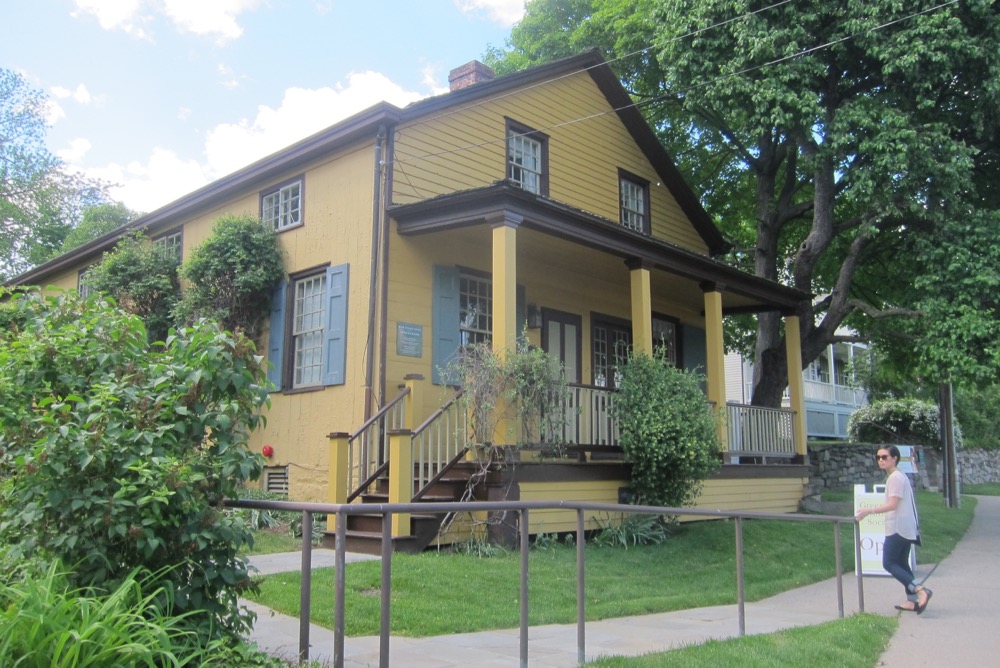
Greenwich. Ah, Greenwich. That town we all know is wealthy but so few of us really know just how wealthy. It’s a fun town to make plans to take your wife to on your anniversary. A fancy lunch, some fancy shopping, perhaps a fancy dinner with fancy drinks, and –
– hahaha, who am I kidding? Yes, it was our anniversary and yes, we went to Greenwich, but the only place on our itinerary in town was the Bush-Holley House, home to the Greenwich Historical Society! C’mon, you people know me better than that! Oh, man, that was a good one… “fancy shopping!”
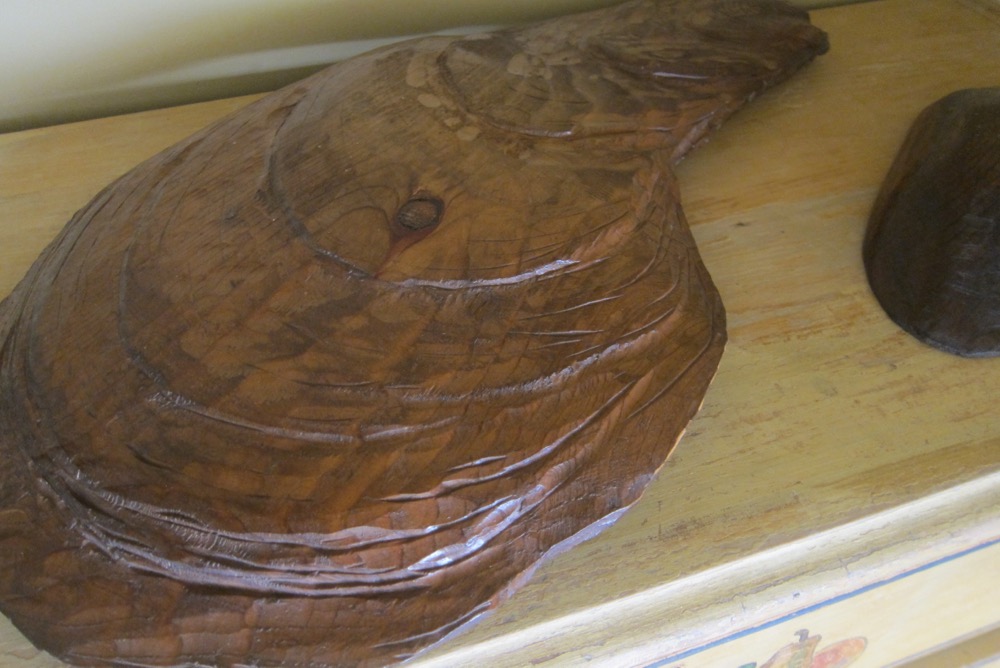
The visitor experience here is also a good one. (Since our visit in 2014, the Greenwich Historical Society found a few bucks lying round and expanded and improved a bit, but you’ll get the gist from this page.) There are essentially two different museums here under two roofs. The Greenwich history part and the Cos Cob Art Colony part.
Not quite as famous as the Art Colony at Old Lyme from back in the day, Cos Cob (a part of Greenwich) was right up there… but we’ll get to that in a bit. From the front of the museum complex, you can gaze upon the Mianus River, out at a site once known as the Lower Landing. This view inspired artists from far and wide:
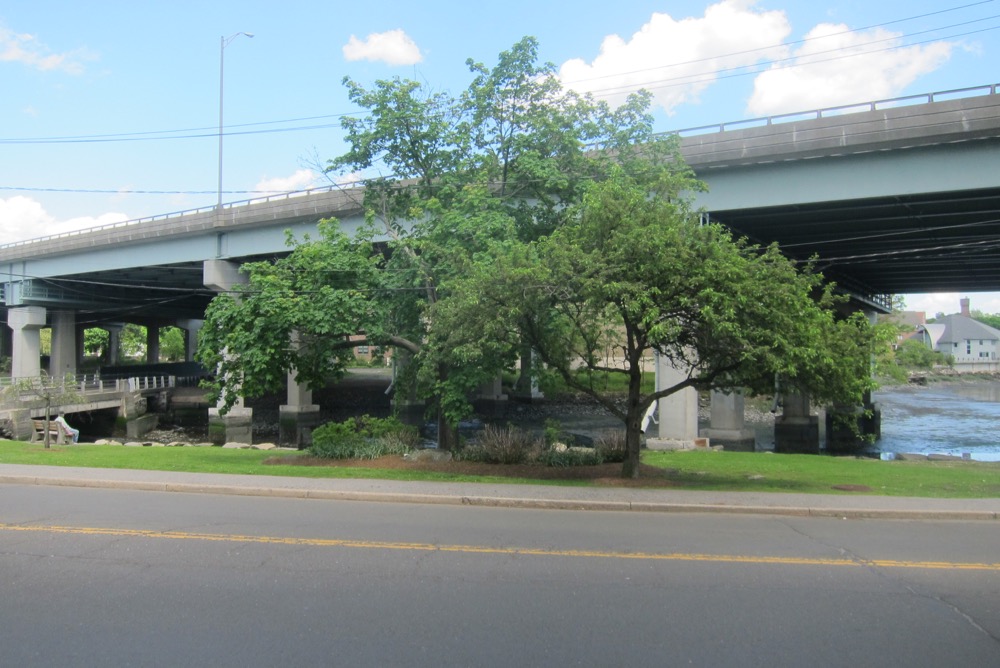
Beauty spot
Just ignore I-95.
The buildings here are leftover from the Bush family of the 18th century. (This is a different Bush family from Greenwich that gave us two presidents and several awful wars in Iraq and Afghanistan.) Merchant David Bush and his son Justus Luke Bush built and operated a tide mill and several warehouses for their mercantile business. Though the mill and its surrounding buildings no longer stand, the Bush–Holley House (1732) and the Bush Storehouse (1805) — which now houses offices for Historical Society staff – do.
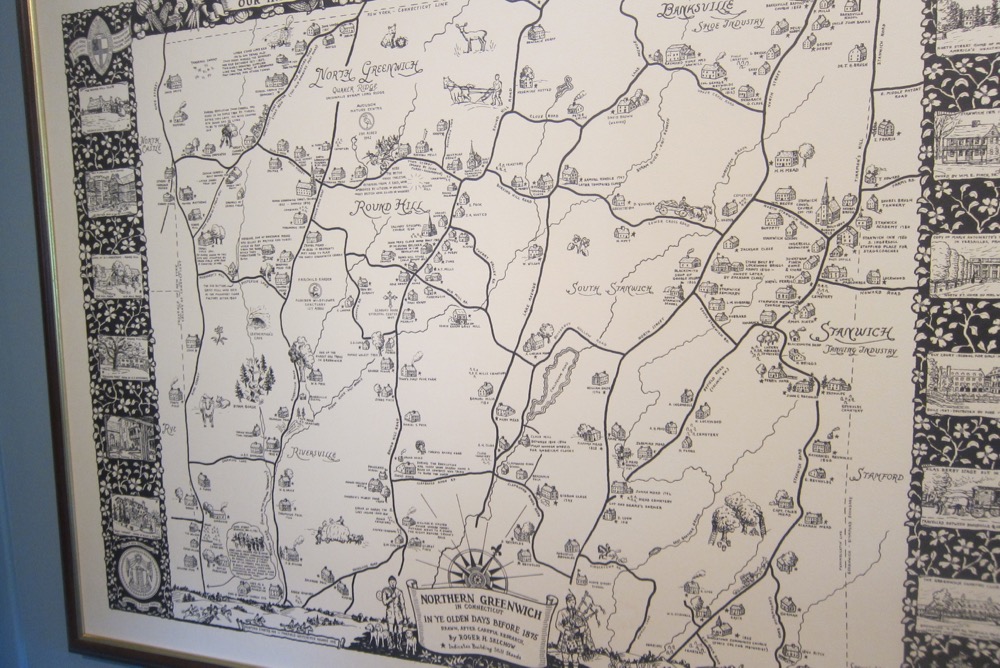
The grounds themselves are quite nice, despite being in the shadow of the interstate. Hoang and I began in the (I think) old tavern building which now houses the Greenwich history collection. This is a mix of permanent and special exhibition space and it’s what you’d expect from Greenwich: professional quality museum space.
The exhibit on display during our visit was all about the old money monster estates of Greenwich. Mansions with names and history and wealth beyond our comprehension. Exactly what we’d want from a Greenwich history lesson to be honest. Greenwich is Greenwich and there’s no pretending otherwise. (Missing from the history lessons here are its tradition of classism and racism unless you realize that’s just inherent in this stuff.)
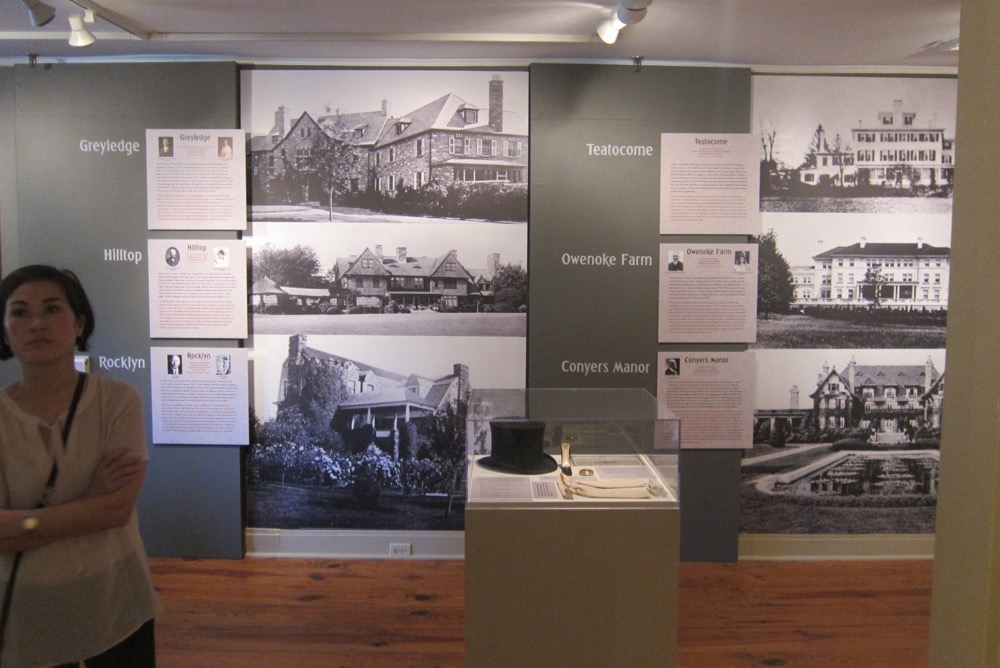
In 1640, settlers from Massachusetts purchased land between the Asamuck and Patomuck rivers in the area now known as Old Greenwich. Not long after, the English joined the Dutch in a dispute with the Native Americans, which resulted in a massacre at the Indian village of Petuquapaen. The newcomers then carved out larger and larger land holdings on which to raise potatoes, grain and fruit. Settlements grew along the shore from Stamford on the east to the Byram River on the west and north to the New York State border. By 1730, the nearly 50 square miles which comprise present-day Greenwich were laid out.
There were wars and farms and all the stuff towns went through in the new United States. Then the railroad came in 1848 and New Yorkers vacationed at Greenwich beaches…
Greenwich also developed as a resort catering to New Yorkers wishing to escape city life for the summer. Along the shore, hotels were erected. Many visitors later decided to build homes here, creating such areas as Belle Haven, Field Point Park, Byram Shore and Rock Ridge. Families whose names we recognize today—Benedict, Bruce, Converse, Gimbel, Havemeyer, Mallory, Milbank, Rockefeller and Teagle—amassed large land holdings and built the estates for which Greenwich is famous.
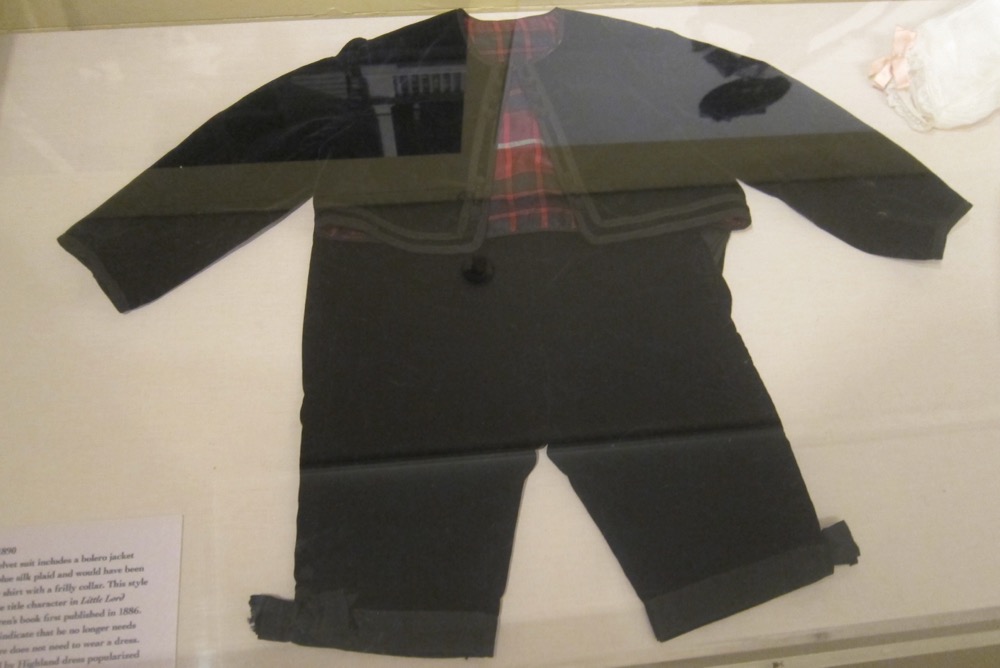
Oh wait, reading through the historical society’s “Short History of Greenwich,” they do drop in a reference to its infamous history of racism and classism! Hats of to them for their honesty; after talking about the invention of cars and the building of highways and the expanding population of the town, they slide this in:
The second half of the century saw a growing concern in Greenwich for protecting its heritage…
Yeah. That’s when the town made everything a “historic district” and “protected” everywhere one way or another and, well, that’s how we have towns like Greenwich in the same county as Bridgeport. This isn’t the place to discuss what effect these decisions decades ago has on today’s socioeconomic disparities in Connecticut. Greenwich and its lower Fairfield County neighbors are incredibly important to the state’s coffers. Very fine people live in Greenwich… and despite them not wanting outsiders visiting, it’s a beautiful town to visit. And the Bush-Holley House Museum is beautiful too.
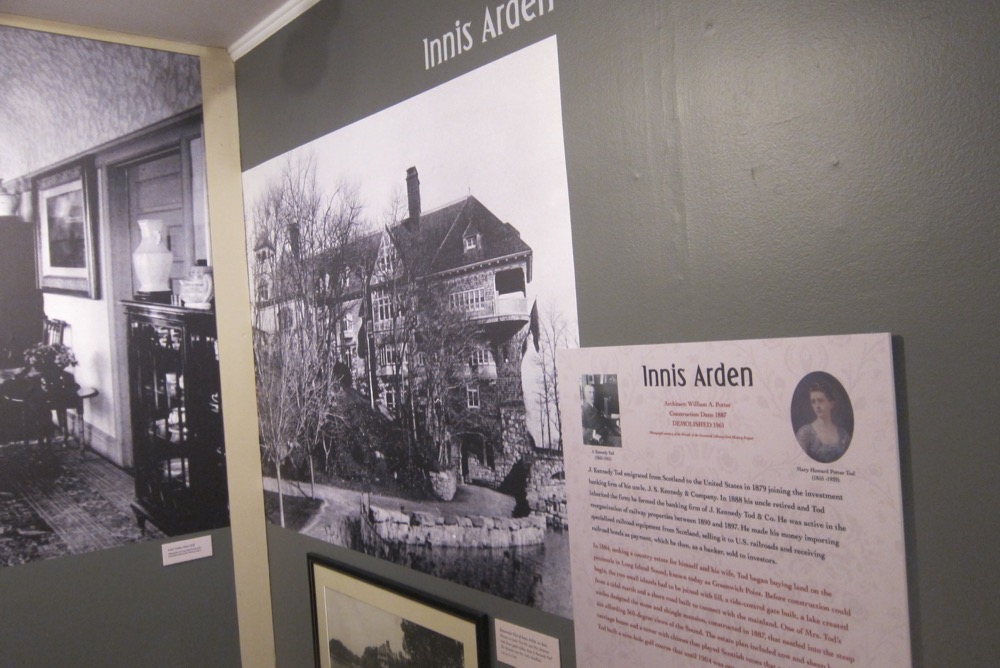
Hoang and I gawked at the pictures of the estates on display. Places with names like Teatocome, Innis Arden, and Wyndygoul. These are the estates that have been lost; replaced by other estates with less European names. These were the homes of tycoons and magnates. Tycoons and magnate still call Greenwich home, of course, just in less classical mansions.
Innis Arden was home to some guy who got into banking and then railroads and then selling interest in railroads. His last name was Kennedy (of course) and he built on an island and filled in between two islands and… you get the point. These are not homes we’re building.
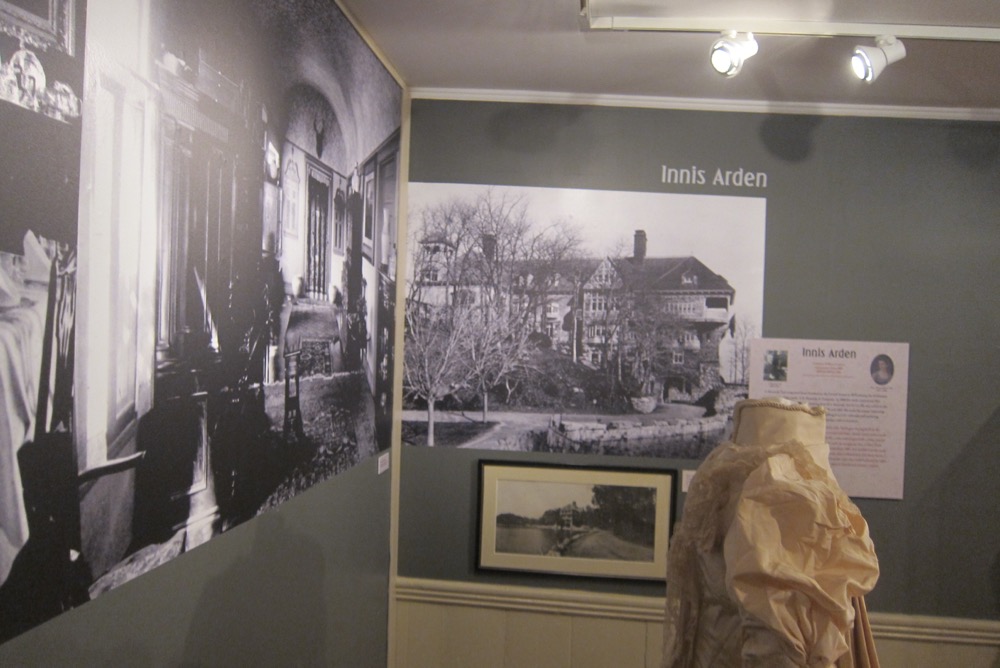
In Greenwich, every historical story is attached to someone of great power and/or wealth. Like, “oh, that old cribbage board? That was made by Grover Cleveland who used to come up here, and… I’ll let them tell it:
President Cleveland was the 22nd and 24th President of the United States, serving from 1885 to 1889, and again from 1893 until 1897. One of his closest friends was “Commodore” E. C. Benedict, who lived in Greenwich and famously owned the yacht Oneida. Commodore Benedict, a banker and yachtsman, lived in a mansion on the 80-acre peninsula on the Long Island Sound in Greenwich known as Indian Harbor. (The home, although modified, still stands today.) On land and at sea, President Cleveland and Benedict enjoyed playing cribbage. Cribbage, a card game in which two or more players accumulate points in several rounds tracked on the distinctive peg boards, was a popular game of the period. This well-used, rough-hewn board shown above was carved by the president during one of their cruises on the Long Island Sound.
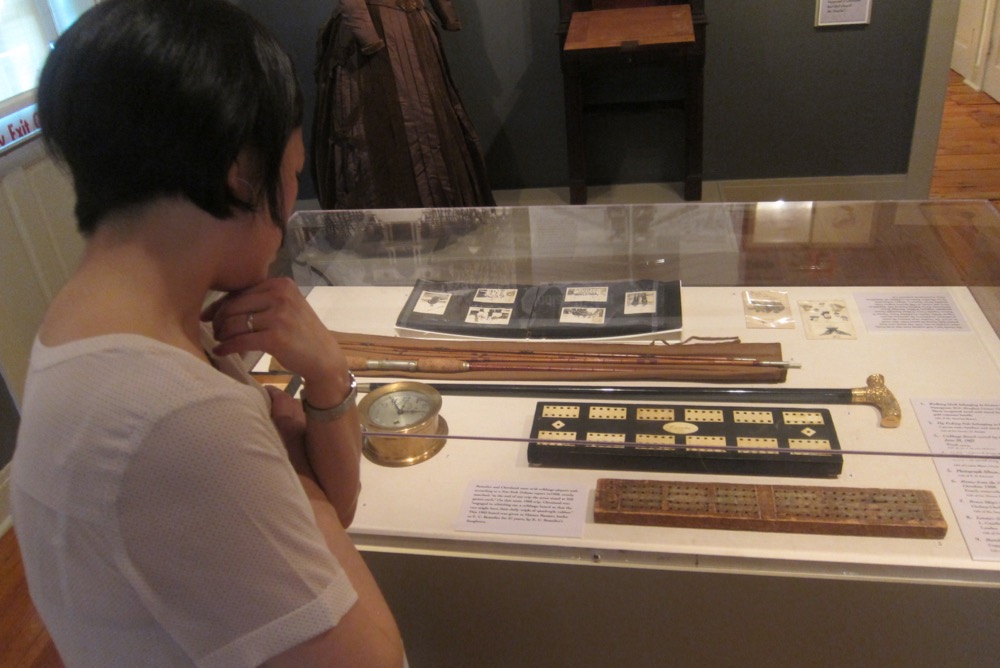
A president, a mansion, a yacht, and a guy named “Commodore.” So Greenwich. There were some other rich people artifacts and clothing items here and there, but that pretty much sums up the history of Greenwich exhibits in the first building for us. The actual Bush-Holley House next door is the true star of the complex. So let’s go over there.
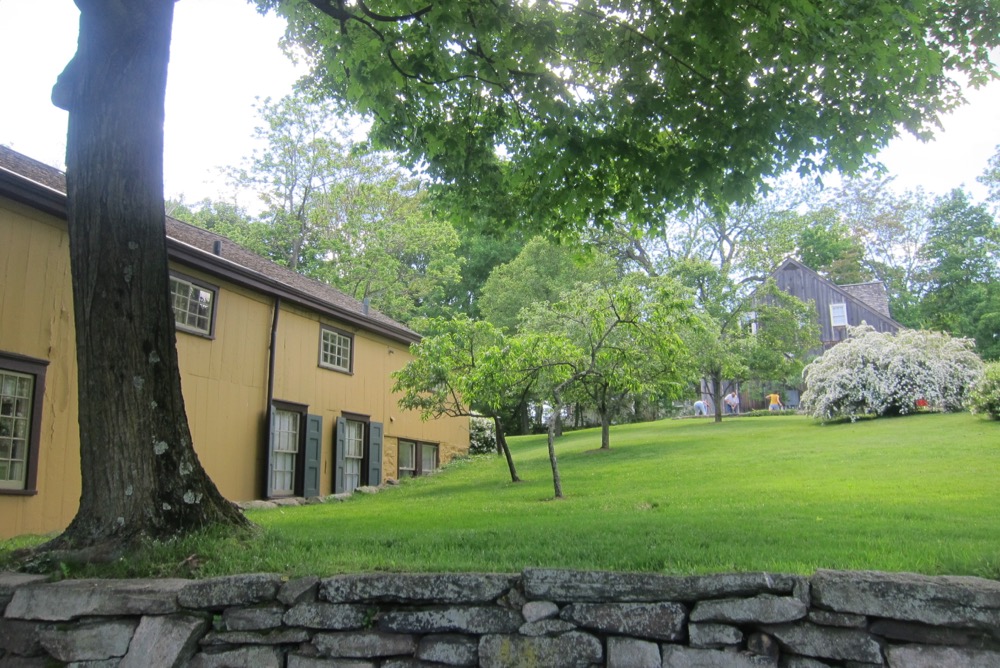
The Bush-Holley House was built in stages beginning 1728–1730 with a one-room, two-story structure on a hilltop overlooking the harbor, a prime spot to load and unload cargo for the New York trade. A few years later the main “salt box” house was built and, in 1738, Justus Bush, a wealthy Dutch Greenwich farmer and town selectman, purchased but did not occupy it. Justus Bush’s son David Bush (b. 1733) became owner after his father’s death, and…
Oh you don’t care. The visitor experience here is a mix of historic house museum and art museum – and it’s done really well. The Bush family expanded the house and property a few times and – oh wait, here’s a matter-of-fact paragraph that contains nothing matter-of-fact.
His household continued to expand when in 1777, then a widower, he married his sister-in-law, Sarah Scudder Isaacs (b. 1742), adding five of her six children to his five, and fathering five more before his death in 1797. The inventory of his household included 10 enslaved adults and children, making him the largest slave-owner in town.

The house moved to the Holley family in 1848 when it became a boarding house. A few decades later, Josephine and Edward Holley ran the boarding house specifically for artists and writers. The Holley family owned it until 1957 when they sold it to the Town of Greenwich to become a museum.
And here we are. Some of the rooms are set up as they were when the Bushes (and their slaves) lived here in the 18th century. Other rooms sort of move through the ages up through the Holley artist colony – known as the Cos Cob Art Colony. We had a tour guide that kept urging me along because I was hanging back in order to take my photos – unsure if I was allowed to do so, and afraid to ask which would draw attention to my furtive activities.
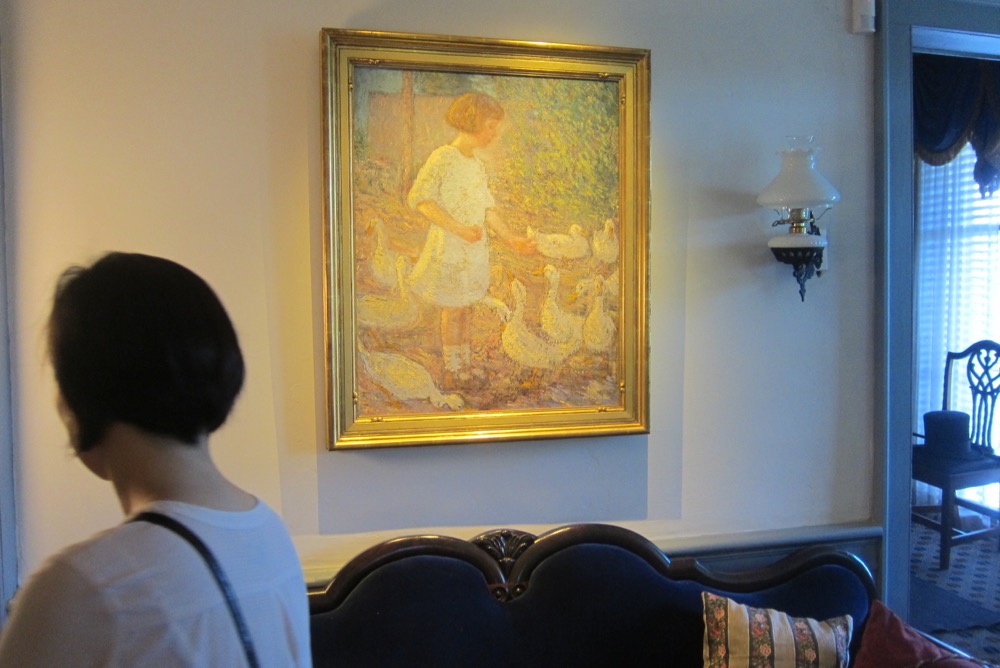
We toured the “Best Bedroom” which cost more to board in and attracted the better paid artists of the day. Cos Cob’s most famous artist was probably Childe Hassam, whom I had never heard of. He was tight with fellow American Impressionist artists J. Alden Weir and John Henry Twachtman, both of whom I had heard of. Some of Hassam’s most famous paintings feature the mantle of the “Best Bedroom” at the Bush-Holley House.
And check this out, President Obama had a Hassam painting hanging in the Oval Office:
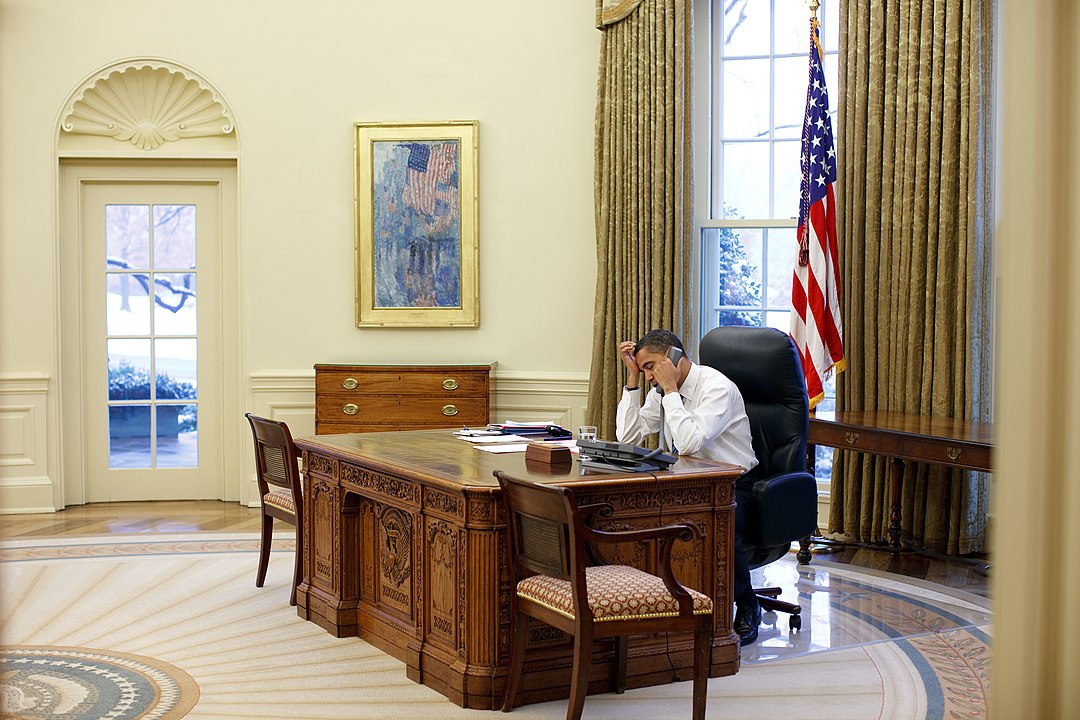
That’s neat I guess.
From the early 1890s until the 1920s the Holley House was the gathering place for a group of artists and writers who were members of what became known as the Cos Cob Art Colony, the first Impressionist art colony in Connecticut. The Cos Cob Art Colony played a major role in the development of American art, because it was here that the leading American Impressionist artists gathered to discuss their work and to teach. Among the early members were Childe Hassam, Ernest Lawson, Theodore Robinson, John Henry Twachtman and J. Alden Weir.
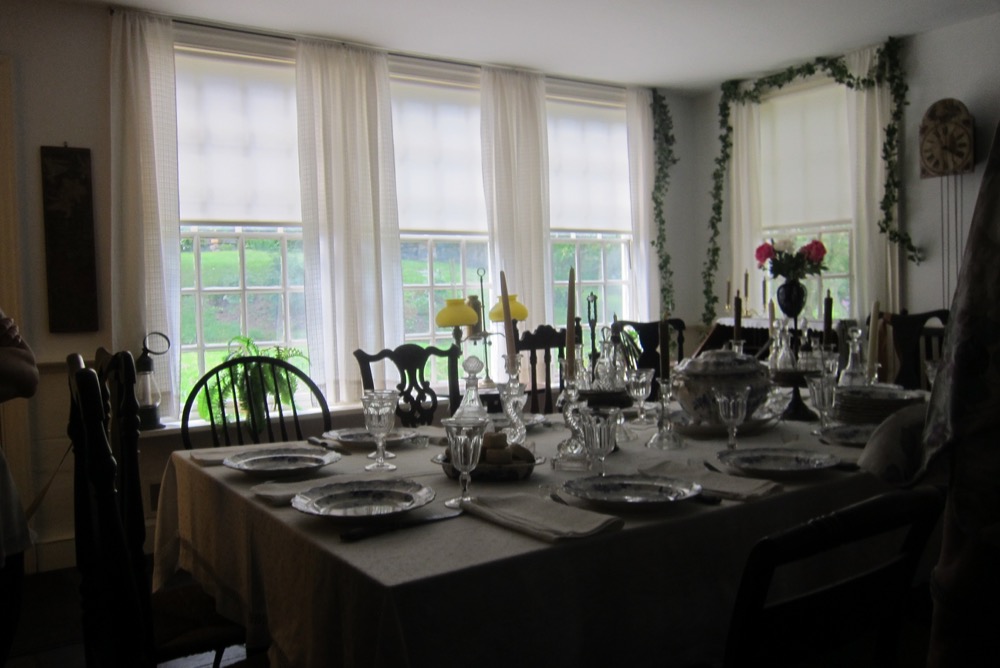
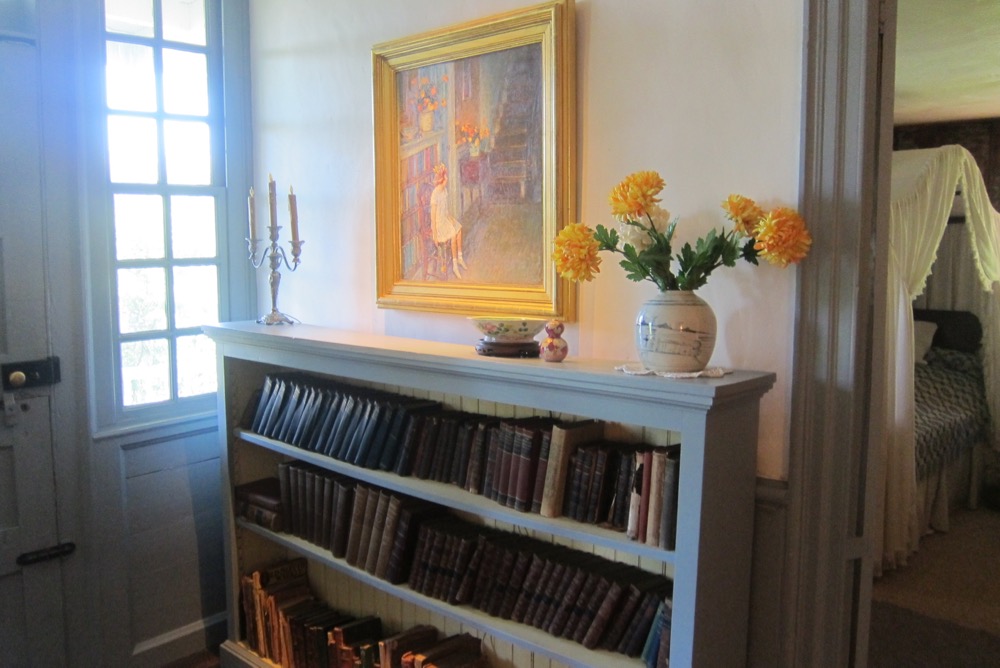
There are several rooms to visit and they are all set up beautifully. We learned about Impressionism and the artists and writers who stayed here during its life as an art colony. Our guide was knowledgeable, friendly, and funny. We enjoyed our tour and learned about a bunch of artist that were new to us. I’ll end this page with some more information from the historical society, since they know about this place way more than I do.
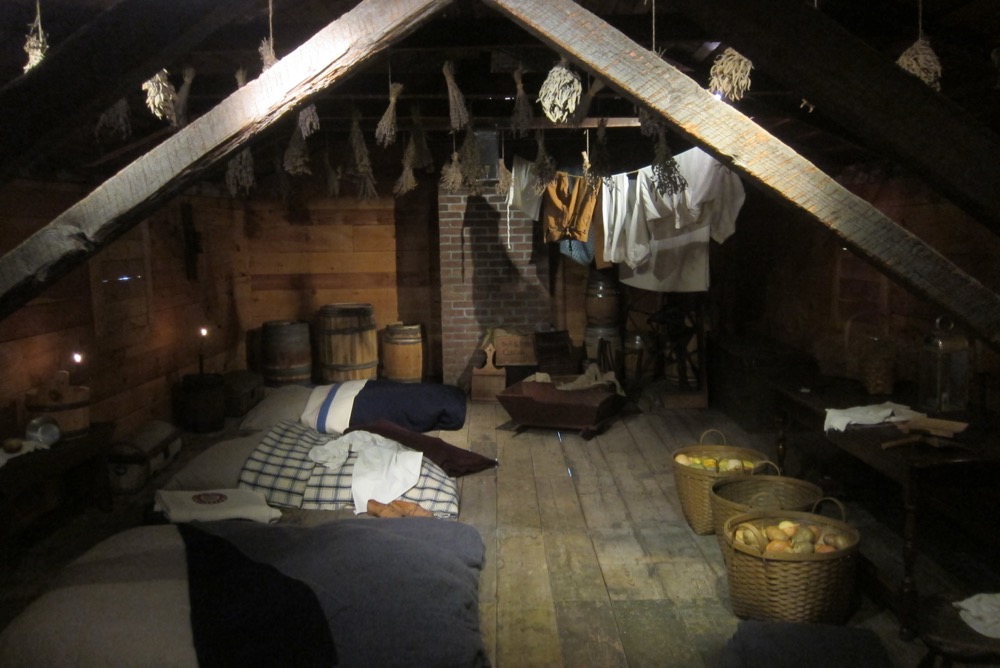
Slave quarters
The Holley House was known as a place of gracious hospitality. Nowhere is this more apparent than in the dining room, where guests and family gathered for meals each day. Art colonists, their spouses, the Holley’s and MacRae’s, and invited guests gathered around the long table to share their experiences and ideas, an important aspect of art colony life. Meals were served family style, orchestrated by Josephine Holley and Constant Holley MacRae, and executed with the help of hired servants. A vegetable garden, fruit orchard and chicken coop enticed the boarders, many of whom were accustomed to city life. Flowers from the gardens surrounding the house completed the romantic feel of the room. The result was an attractive combination of lively conversation and home-style meals in an elegant but comfortable setting.
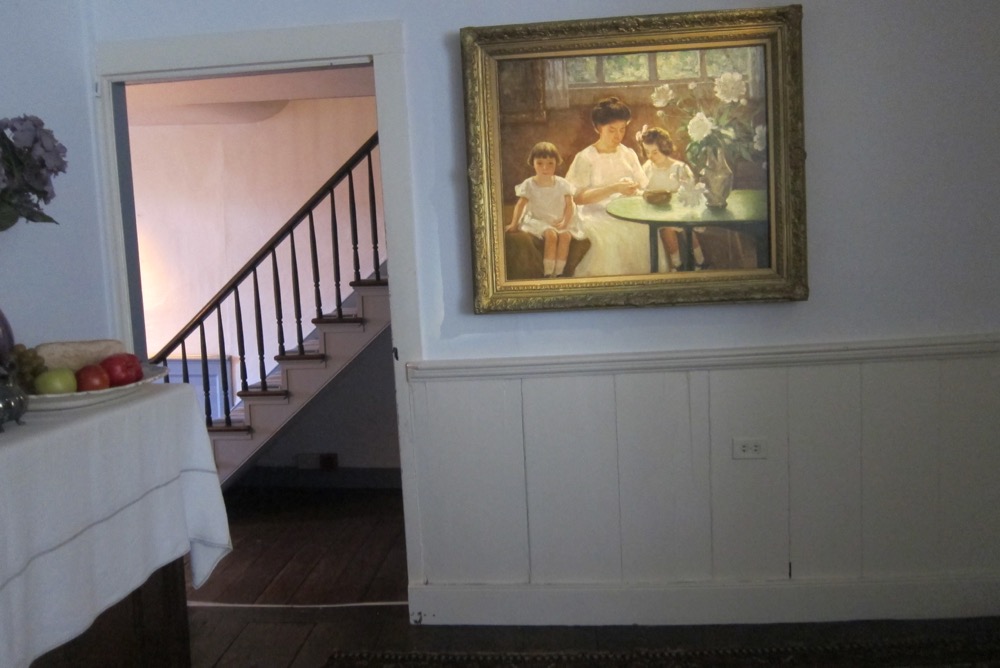
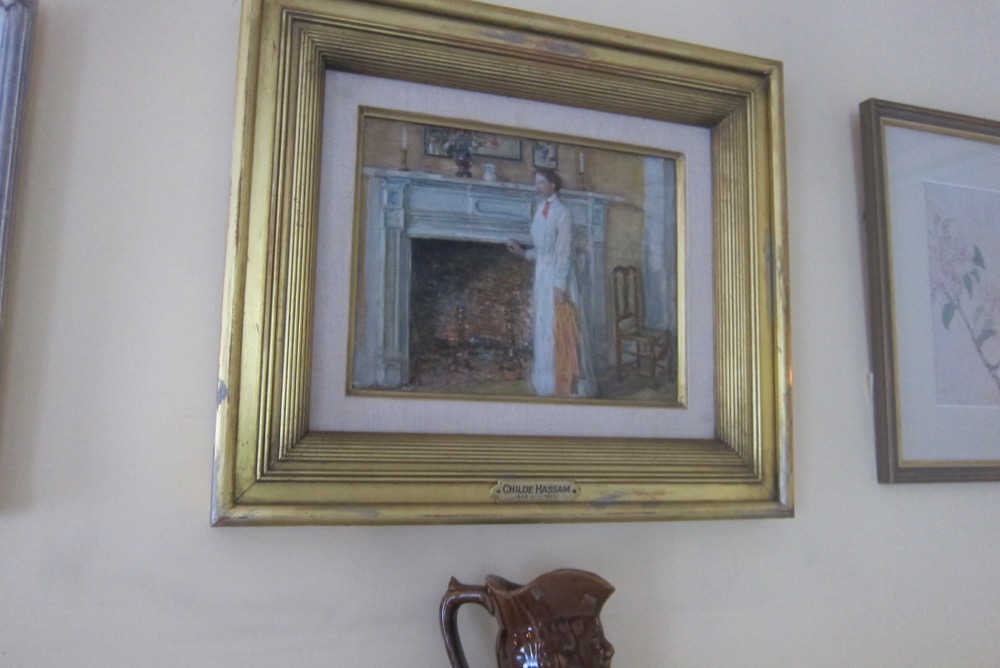
Those who visited the art colony took part in Halloween parties, Japanese tea ceremonies, tableaux, boating, and piano playing. But it was around the dining room table that the liveliest conversations took place. Boarders, artists, journalists, writers, and others gathered here to debate current events and art. Many notables visited the art colony, including Lincoln Steffens, a muckraker journalist famous for uncovering government corruption, Willa Cather, an influential American novelist, and the publishers of The New Republic, are just of a few of the varied thinkers who participated in the art colony.
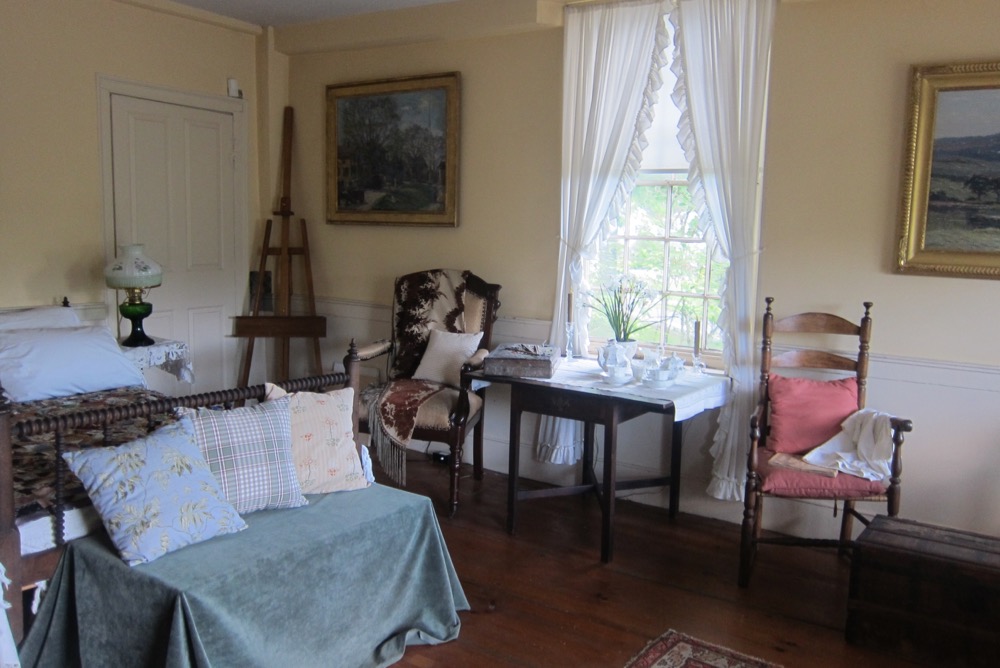
While not as famous as the Florence Griswold Museum and the Art Colony at Old Lyme (at which many of the same artists spent time), it’s certainly worthy of a visit from anyone interested in Connecticut’s place in American impressionism history.
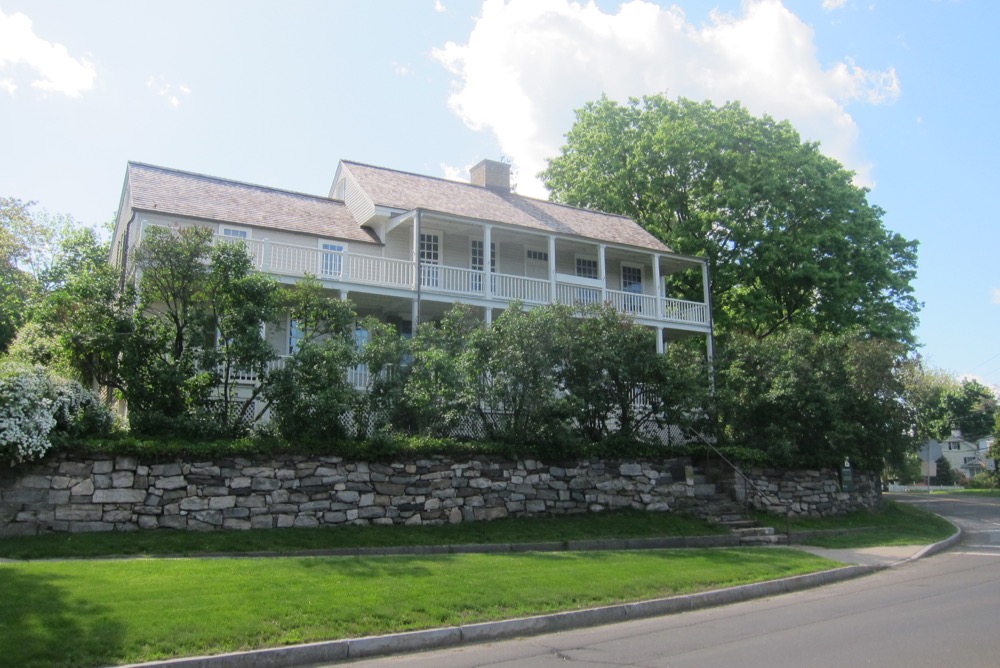
![]()
Greenwich Historical Society
CTMQ’s Connecticut Art Trail
CTMQ’s CT Women’s Heritage Trail

Leave a Reply